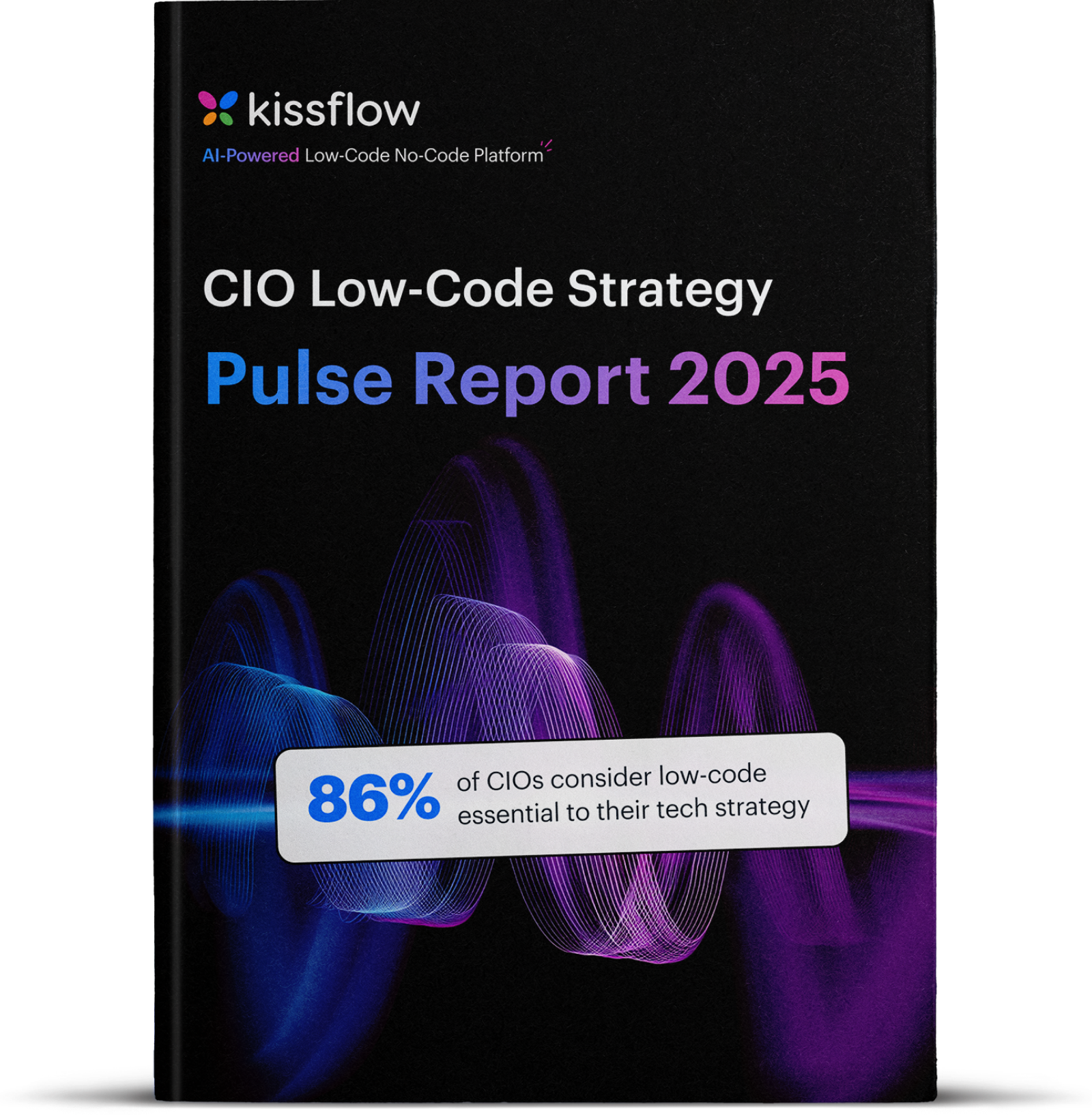
- >
- Oil and gas>
- Eliminate fuel pricing bottlenecks
How to Eliminate Fuel Pricing Bottlenecks That Cost You $75,000 Per Day
Picture this: It's 6 AM on a Tuesday, and fuel price updates are due across 300 retail locations in six hours. Your pricing team is scrambling through spreadsheets, the finance director is unreachable for approval, and three outlets are already calling because their systems show different rates. Sound familiar?
When pricing updates involve hundreds of locations, multiple approval layers, and strict compliance deadlines, manual processes become operational landmines. One delayed approval or missed system update can trigger compliance violations, customer complaints, and revenue losses that ripple through your entire downstream operation.
The answer isn't another point solution or complex enterprise software rollout. It's building a digital operations backbone that strengthens your existing operational discipline while eliminating the manual handoffs that slow everything down.
Why fuel pricing automation demands more than spreadsheets
In regulated markets, fuel pricing operates under intense pressure. Government agencies set base prices on fixed schedules, often with minimal notice. Your responsibility is implementing those changes across every retail outlet, dealer network, and customer interface without delay or error.
The complexity multiplies when you consider what really happens during a pricing update. Finance teams need approval workflow software that don't bottleneck on email chains. Operations managers need real-time visibility into which locations have updated their systems. Compliance officers need audit trails showing exactly when and where each price change was applied.
Traditional approaches using disconnected spreadsheets and manual data uploads create too many failure points. A price might update in your ERP system but miss the customer portal. Retail outlets might apply new rates hours late. Sales teams continue quoting old prices to commercial customers. These mismatches damage customer trust, reduce profitability, and attract unwanted regulatory attention.
Modern fuel pricing automation requires a different approach. You need oil and gas retail solutions that integrate with your existing SAP, Oracle, or other core systems while digitizing the critical workflows that connect them. This is where Kissflow's digital operations backbone proves its value, coexisting with your current infrastructure rather than replacing it.
Building centralized control without system disruption
The most successful fuel pricing automation implementations start with a simple principle: create one source of truth for pricing decisions while preserving your existing IT investments. Instead of forcing teams to work around disconnected systems, you build workflows that coordinate updates across every platform automatically.
With Kissflow serving as your digital operations backbone, pricing managers work through a unified interface while the platform handles integration with ERP systems, point-of-sale terminals, and customer dashboards. This eliminates version mismatches and ensures consistency across every location without requiring expensive system replacements.
TotalEnergies demonstrates this approach across 85 processes in 8 countries. Their fuel pricing workflows integrate seamlessly with existing financial systems while providing the real-time coordination needed for regulated market compliance. The result is faster price updates, fewer errors, and stronger audit readiness without disrupting proven operational systems.
This model works because it strengthens existing operational discipline rather than replacing it. Your teams continue using familiar tools while gaining the automated coordination that eliminates manual bottlenecks.
Approval workflows that move at business speed
Most fuel pricing changes require multiple approvals for legal, finance, and compliance reasons. Traditional email-based approval processes create unnecessary delays when someone is traveling, in meetings, or simply overwhelmed with other priorities. These delays compound quickly when you're working against regulatory deadlines.
Kissflow's low-code platform enables fully customizable approval workflows with built-in escalation rules. Teams can define routing logic, set automatic reminders, and escalate requests that sit idle too long. The system maintains complete audit trails while ensuring the right people are involved at the right time.
The business impact is immediate. Companies using Kissflow report 40-60% faster approval cycles compared to manual processes. When you're updating hundreds of locations every two weeks, those time savings translate directly into reduced operational stress and improved compliance confidence.
McDermott's implementation across 450 processes demonstrates this scalability. Their approval workflows handle everything from pricing updates to vendor selections with consistent speed and documentation. The 10X ROI they achieved came largely from eliminating the hidden costs of delayed decisions and manual coordination.
Real-time coordination across oil and gas distribution operations
Once prices are approved, communication becomes the next operational challenge. Outlet managers, finance controllers, and customer service teams need to know exactly when changes go live. Traditional methods like forwarding spreadsheets or making phone calls leave too much room for delays and confusion.
Effective fuel pricing automation integrates communication directly into the pricing workflow. Kissflow enables instant notifications through email, SMS, or in-app messages while automatically syncing updates with external systems. This ensures retail terminals and customer-facing applications reflect correct rates simultaneously.
The operational benefits extend beyond speed. Real-time coordination improves customer experience by eliminating pricing confusion at the point of sale. It also reduces strain on help desks that typically handle pricing-related inquiries during update periods.
Puma Energy's experience with 80 use cases across their distribution network shows how this coordination scales. Their 73% productivity increase came from eliminating manual handoffs and ensuring consistent information flow across all operational touchpoints. When your oil and gas distribution operations span multiple countries and regulatory environments, this coordination becomes essential for maintaining compliance and customer satisfaction.
Modernize Refining and Distribution Operations
Using AI-powered insights for smarter pricing decisions
While regulated markets limit base price flexibility, companies still manage bulk discounts, commercial contracts, and regional pricing structures. These areas benefit significantly from data-driven decision making that goes beyond simple price updates.
AI-powered pricing tools within Kissflow provide insights into customer behavior, sales performance, and pricing effectiveness. They identify outdated contracts, underperforming pricing tiers, and opportunities to optimize margins within compliance constraints. Predictive analytics help teams anticipate market changes and test potential adjustments before implementation.
The key advantage is integrating these insights directly into approval workflows. Data-driven pricing recommendations can be reviewed and approved like any other input, maintaining human oversight while leveraging AI acceleration. This combination of artificial intelligence and proven operational discipline creates better decisions without adding complexity.
Compliance documentation that auditors appreciate
In highly regulated markets, documentation isn't optional. Every pricing update must be supported by clear records showing who made changes, when they were approved, and where they were applied. This requirement becomes particularly challenging when you're managing hundreds of locations across multiple time zones.
Kissflow's platform logs every action automatically, creating comprehensive audit trails without additional administrative burden. Teams can generate reports with timestamps, approval records, and system-wide update confirmation. These reports are always available and easy to format for regulatory reviews.
The compliance benefits go beyond documentation. When auditors can quickly verify your pricing processes and see consistent application across all locations, it builds trust and reduces audit scope. This translates into shorter audit cycles, fewer compliance questions, and stronger regulatory relationships.
Companies report 30-50% more efficient compliance reporting when they digitize these workflows. The time savings come from eliminating manual record collection and providing auditors with the structured documentation they need to verify compliance quickly.
Business-led development with IT-managed governance
Traditional enterprise software forced all application development through IT departments, creating massive backlogs that delayed business solutions for months. This approach made sense for security but created frustration when business teams needed simple workflow improvements.
Low-code platforms for the energy sector offer a better balance. With Kissflow, business users can build and maintain their own pricing workflows, dashboards, and notifications while IT teams retain control over permissions, integrations, and compliance requirements. This shared responsibility model delivers faster solutions without sacrificing governance.
The approach proves particularly effective for fuel sales automation at scale. Pricing teams work independently within controlled environments, reducing time to value while maintaining security standards. IT teams focus on strategic integrations and platform management rather than building individual workflow applications.
This model supports the 100+ validated use cases that Kissflow delivers across upstream, midstream, downstream, and EPC operations. Each use case follows the same pattern: business teams define requirements, build solutions using low-code tools, and IT teams ensure everything integrates properly with existing systems.
Quantified returns that justify investment
Fuel pricing automation delivers measurable financial returns that extend far beyond time savings. The Nucleus ROI Report documents 450% ROI in 2.8 months for organizations implementing Kissflow's digital operations backbone. These returns come from multiple sources: faster decision cycles, reduced manual errors, improved compliance efficiency, and eliminated productivity losses.
Consider the hidden costs of manual pricing processes. A typical enterprise application might take five months to build using traditional development methods. On Kissflow's platform, it can be developed in one month or less, saving $40,000 or more per application. If your organization has ten such workflows in backlog, that represents a $400,000 opportunity.
The ongoing operational savings are even more significant. Companies report 70% reduction in manual handoffs and data re-entry, eliminating the errors and delays that create customer service issues. When you're managing fuel pricing across hundreds of locations, these improvements translate into substantial cost avoidance.
In organizations with 1,000 employees, even modest productivity improvements among pricing and process owners create large gains. If 30 process owners improve productivity for half the organization by just 5%, the value created exceeds $3.5 million annually.
Streamline Pipeline and Transportation Management
Real transformation in action
A multinational energy company with operations in more than 40 countries adopted Kissflow to manage internal pricing and procurement workflows. They built over 100 applications for tasks ranging from airport refueling to pricing approvals and vendor selection.
More than 2,000 users engaged with the platform regularly. Within the first year, they reported 73% improvement in operational productivity. They moved from manual spreadsheets and inconsistent communications to a unified system that delivered faster updates, fewer errors, and better compliance documentation.
This transformation is now possible for any organization willing to invest in the right digital foundation. The key is building that foundation incrementally, starting with high-impact workflows and expanding as teams see results.
Starting your fuel pricing automation journey
Improving your fuel pricing process doesn't require a complete system overhaul. Start with one pricing workflow that currently causes delays or errors. Map out where it slows down and identify the manual handoffs that create bottlenecks.
Use Kissflow's digital operations backbone to centralize control, automate approvals, and add real-time communication. Once you see the impact in reduced firefighting and faster execution, expanding becomes easier and more compelling.
The platform's 99.9% uptime in live oilfield environments provides the reliability your operations demand. Its proven integration with SAP, Oracle, Maximo, and other enterprise systems ensures your investment strengthens rather than disrupts existing operational discipline.
Your teams will feel the difference immediately: less time spent on manual coordination, faster response to regulatory changes, and stronger confidence in compliance documentation. These improvements create the foundation for broader digital transformation across your oil and gas operations.
Kissflow's oil and gas solution is ready to support you through that journey. The platform offers the flexibility to meet your pricing needs today and scale to new use cases over time. With 20+ major Oil & Gas enterprises already proving the value, you're implementing a solution with demonstrated success across upstream, midstream, downstream, and EPC operations.
Explore Kissflow's Oil and Gas App store to know more about how it can transform you business.
Explore how Kissflow can transform your fuel pricing automation
Related Topics:
Related Articles











